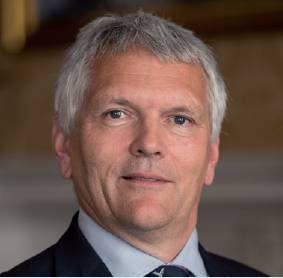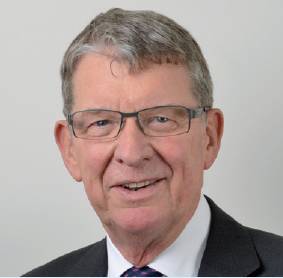Message from RAeS
Message from RAeS
 In
these challenging times there has been a scarcity of good news, so it was very pleasing to hear that the
Society has been awarded the Best Professional Engineering Institution Prize as one of the inaugural
Engineering Talent Awards. The award ‘recognises PEIs who go above and beyond to support their members and
who are particularly increasing awareness of D&I and positive mental wellbeing’. We were shortlisted
against two of the larger professional institutions, so this outcome is particularly welcome. The award
highlights some of the exceptional work that is being done by the Headquarters staff and many of our
volunteers. Many thanks must go to Lt Cdr Richard Gearing FRAeS and the D&I Working Group who put the
nomination together. Congratulations to all involved.
In
these challenging times there has been a scarcity of good news, so it was very pleasing to hear that the
Society has been awarded the Best Professional Engineering Institution Prize as one of the inaugural
Engineering Talent Awards. The award ‘recognises PEIs who go above and beyond to support their members and
who are particularly increasing awareness of D&I and positive mental wellbeing’. We were shortlisted
against two of the larger professional institutions, so this outcome is particularly welcome. The award
highlights some of the exceptional work that is being done by the Headquarters staff and many of our
volunteers. Many thanks must go to Lt Cdr Richard Gearing FRAeS and the D&I Working Group who put the
nomination together. Congratulations to all involved.
I am continuingly impressed as to how most of the Society’s activities are continuing to flourish, albeit in a digital format, and this includes our publications. The Aeronautical Journal continues to publish high-quality research papers covering all forms of aerospace vehicles. As well as a continuing expansion of the number of internationally renowned Associate Editors, who co-ordinate the manuscript review process, it is satisfying to note that downloads from the Journal have increased by a third in the past year – a substantial rise. We are always looking for ideas for review articles or subject-based special issues, so if you have any suggestions for good topics and/or individuals whom we should approach, please contact the editor Prof Holger Babinsky FRAeS journal.editor@aerosociety.com
As I mentioned in the last edition of AEROSPACE, the Society has started its virtual conference programme using the new digital platform. I tuned into both days of the Safeguarding Earth’s Space Environment conference and was very impressed with the number of excellent speakers and panel members from across the world who participated. The conference addressed the increasing amount of debris and defunct objects in Earth orbit, which is likely to constrain our future exploration of space, and discussed both the technical approaches to tracking, avoiding collisions and de-orbiting large objects and the need for enhanced international regulations and global collaboration. I would like to thank President-Elect Howard Nye FRAeS and the Space Specialist Group for organising such an excellent event.
I also recently attended the committee meeting of my local RAeS Branch and was pleased to see that a programme of lectures was being put together for the coming season, of course in an online mode. The intention is to provide a mixture of local presentations coupled with offerings from the main Society and other Branches. I would encourage all our local Branches to make each other aware of events that they are putting on and to share them digitally. One positive outcome with the move to a digital lecture programme has meant that we now have had many 100s of attendees to lectures in Hamilton Place that would have not been able to travel to London in normal times. I hope that this is will be the case with future branch lectures. In my last column I mentioned the homework that I had set Council over the summer to consider the future operation of the Society and September’s Council meeting included a very useful discussion about the outcomes from this exercise. Bearing in mind that we don’t have the resources to tackle everything, it was considered that the most important areas where focus is needed to meet the Society’s strategic aims (outlined in the October 2019 issue of AEROSPACE) are:
- Become genuinely international with more international reach by increasing global and diverse participation in activities with target audiences around the globe, remaining relevant and in the forefront of global aviation (in totality) as a Think Tank for generating new ideas and providing well-considered professional advice, and enabling greater international participation in the Society’s Specialist Groups and Committees.
- Digitisation of the Society needs to improve further so that digital delivery becomes an integral part of our day-to-day business facilitating meetings, interviews, workshops, conferences and lectures, etc, making more of our own important historical information assets widely available via digital means, using digital technologies to encourage individuals to join the Society or volunteering their time to support its activities.
- Our volunteer strategy needs considerable work so that a larger diverse, engaged, and inclusive global group of volunteers are recruited across the aviation and aerospace sectors for different types of volunteering experiences. We need to support, inform and develop these volunteers and encourage them to be true ambassadors of the Society and enable volunteers to take a more leading role in delivering activity.
- The Society still needs much improvement in our progress to meet our aspirations to be a truly diverse and inclusive organisation in both word and deed by reaching out to a much wider talent pool, increasing the D&I both within our membership and the Sector at large. The Society’s regulation and governance needs to embrace D&I by pushing D&I within its Boards and Committees and showcasing D&I role models within its Boards.
In the coming months I will let you know about some of the specific actions that are going to be brought in across the Society to enable the above.
